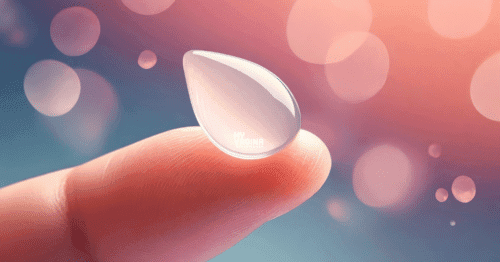Comparison table – what type of bad vag do I have? (BV, AV, Trich, Yeast)
Easy reference table for determining your vaginal infection.
Megaspheara species
Megasphaera species are highly correlated with bacterial vaginosis.
Streptococcus pneumoniae infection in the vagina and pelvic organs
S. pneumoniae is not a bacterium normally found in the vagina, and infection can be serious.
Perineal tears
Perineal tearing is usually from childbirth, where the impact of the baby coming out of the birth canal tears the posterior fourchette and perineum. These types of tears are on the rise, but it's unclear why.
How to treat vaginal tears caused by sex
Treating vulvar and vaginal tears caused by sex, fingering, masturbating or misadventure is usually pretty easy, but you need to know what you're dealing with before you try to treat it.
Using colloidal silver or silver nanoparticles to treat vaginal infections
We examine the antimicrobial properties of colloidal silver and discuss the possible effectiveness of colloidal silver in vulvovaginal infections.
Can meditation improve your sex life?
We look over the research discussing the effects of meditation on female sexual desire and function, with some interesting results. Can meditation truly improve your sex life?
How statins can cause diminished libido
We take a closer look at the effect of statins on libido.
Female smegma: causes, hygiene and how to clean safely
Female smegma buildup under the clitoral hood explained — what it means, why it happens, and safe cleaning tips.
Post-orgasmic illness syndrome (POIS)
Flu-like symptoms appear after orgasm in this unusual syndrome, post-orgasmic illness syndrome. There are two versions of this condition: that POIS that has always existed, and that which develops all of a sudden.
How to make a herbal or essential oil pessary/suppository
Instructions on making vaginal or rectal suppositories and pessaries.
Candida krusei vulvovaginal infections
C. krusei is a rare cause of vulvovaginitis, typically appearing in women who have had multiple courses of other antifungals throughout their lives.
Progress on male contraceptives
We take a look at what's happening in the development of male contraceptives, which seems to be taking an unusually long time to come to fruition. Why is it so hard? We discuss.
Descending perineum syndrome (DPS)
Descending perineum syndrome is a condition caused by the weakening of the pelvic floor by chronic straining on the toilet. DPS is where the pelvic structure takes a dip, with the perineum being one of the indicators of the drop.
Study: Long-term overweight at greater risk of endometrial cancer postmenopause
A study looks at how long women were overweight or obese for, and their risk of certain cancers.
Atrophic vaginitis caused by menopause has a new name
Vulvovaginal atrophy caused by menopause has an updated umbrella term - genitourinary symptoms of menopause (GSM).
Study: does BV cause infertility in women?
A study looked into rates of certain types of female infertility and how that related to BV.
Study: Gardnerella vaginalis – links with male infertility?
Researchers look into the sperm quality of infertile men carrying G. vaginalis.
Evidence for men carrying Gardnerella vaginalis in the urethra
A couple of older studies look at G. vaginalis in the urethras of men.
How gentian violet works
An old study examines gentian violet's antimicrobial properties against bacteria.




